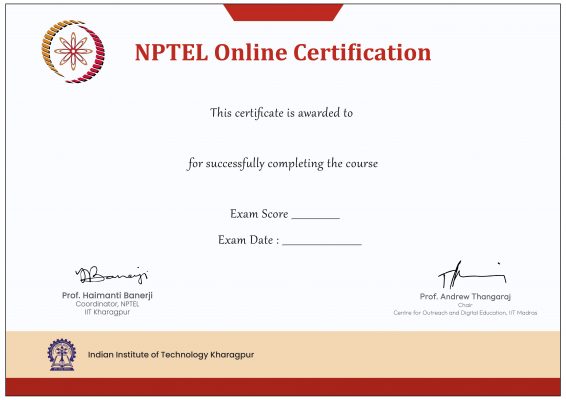Description
Air Interface is one of the most important elements that differentiate between 2G, 3G, 4G and 5G. While 3G was CDMA based, 4G was OFDMA based; this course reveals the contents of air interface for 5G. While 4G brought in a deluge of infotainment services, 5G aims to provide extremely low delay services, great service in crowd, enhanced mobile broadband (virtual reality being made real), ultra reliable and secure connectivity, ubiquitous QoS, and highly energy efficient networks. The above mentioned requirements are expected to be met by several advancement in technologies such as (i) new waveforms (termed as 5G NR, the new radio), (ii) millimeter wave technology, (iii) massive multiple antenna technologies (iv) non orthogonal multiple access (v) heterogeneous networks such as small cells and device to device communications (vi) energy savings in radio access network and (vii) ubiquitous quality of service among others. In this course we aim to provide insight into the fundamentals of the above mentioned methods, which are essential components of 5G Air Interface. We will begin with an overview of 5G technology aspects. Then we will discuss 5G new radio waveform, its genesis and variants. Thereafter we will introduce non orthogonal multiple access scheme. Next we will discuss various aspects of mm wave communication technology. Massive MIMO will be presented next, wherein we will discuss the essential building blocks and design challenges. While all these will be discussed that propagation models which are essential for performance analysis will also be briefly presented. This will be followed by performance analysis of heterogeneous networks including small cells and device to device communication. Then we will present energy saving methods for radio access network through multi objective optimization. The final part of the course will touch upon performance characterization of QoS for delay sensitive traffic for radio access networks. The intended audience includes research scholars who are interested to pursue 5G and beyond technologies to bring improvement in performance, which can make these technologies even more commercially viable. It is also expected to provide practicing engineers an opportunity.
INTENDED AUDIENCE
PREREQUISITES
INDUSTRY SUPPORT
ABOUT THE INSTRUCTOR

Dr. Suvra Sekhar Das is currently serving as associate professor at the G. S. Sanyal School of Telecommunictions in Indian Institute of Technology Kharagpur. He has completed Ph.D. from Aalborg University, Aalborg, Denmark. He has worked as Senior Scientist with the Innovation Laboratory of Tata Consultancy Services. His research interests include cross-layer optimization of mobile broadband cellular networks, 5G, Broadband Mobile Communications, 5G Waveform design GFDM FBMC UFMC, heteogeneous networks Femto Cells Device to Device communication, Multi objective optimization for radio access networks, Green radio network design Packet Scheduling and radio resource allocation with link adaptation, MIMO communications, base-band transceiver design for broadband wireless communication systems. He has delivered several tutorials and seminars on next generation wireless communications. He has guided several PhD students, published several research papers in international journals and conferences. He has co-authored two books titled “ Adaptive PHY-MAC Design for Broadband Wireless Systems” and “Single- and Multi-Carrier MIMO Transmission for Broadband Wireless Systems” . He has developed teaching resource “fading channel and mobile communications ” freely available as interactive web material for learners of mobile communications (http://fcmcvlab.iitkgp.ac.in/ with nearly 2 lacs hits). He has taught several subjects such as Modern digital communication techniques, Broadband access systems, mobile communications and fading, teletraffic engineering, introduction to wireless communication and MIMO communications.



Reviews
There are no reviews yet.